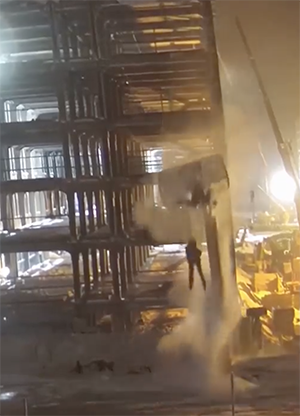 Authored by Ed Davidson with Long Foundation Drilling Co. and originally published on LinkedIn.
Authored by Ed Davidson with Long Foundation Drilling Co. and originally published on LinkedIn.
** SEE THE VIDEO OF WHAT HAPPENED IN THE EMBEDDED POST BELOW. **
Yep...
There ya have it folks...
When everything must go right to correct all your wrongs!
"Hanging by a thread"
How fortunate is it that he decided to use his harness correctly in the aerial lift?
How often have you seen workers in boom lifts with absolutely no fall protection? I’m willing to bet it’s pretty often.
What those workers don’t realize (let’s give them the benefit of the doubt and assume they haven’t been properly trained), is that you are required to be tied-off the moment you step into the basket of a boom lift. How you achieve tie-off may vary, but you must always be tied-off.
29 CFR 1926.453(b)(v) states that “A body belt shall be worn and a lanyard attached to the boom or basket when working from an aerial lift.”
Note that there is no qualifier to this statement – no height at which it kicks in, no type of work you need to be performing, no amount of time you will be in the basket. If you are working from an aerial lift, you must be tied off.
Something should, however, stand out from that paragraph to anybody familiar with safety. The words “body belt” are used here instead of “harness”. If your initial thought was, “Hey, didn’t OSHA ban the use of body belts back in 1998?” you would be correct – when it comes to fall arrest systems. However, body positioning or fall restraint systems are perfectly acceptable in boom lifts.
These systems prevent the employee from being exposed to a fall in the first place and could still utilize body belts. While this is technically compliant, having a body belt available could lead to its use in the wrong situation.
Since full-body harnesses are acceptable in all situations, it tends to be safer to only have harnesses available.
* SEE THE VIDEO IN THE EMBEDDED POST BELOW. **


